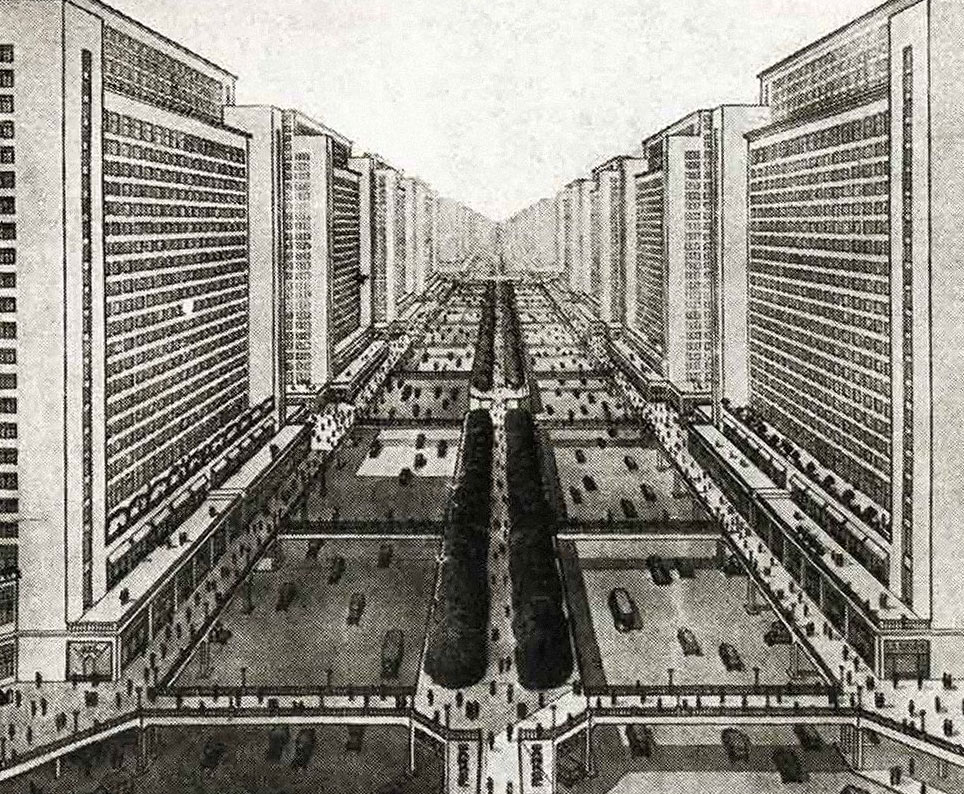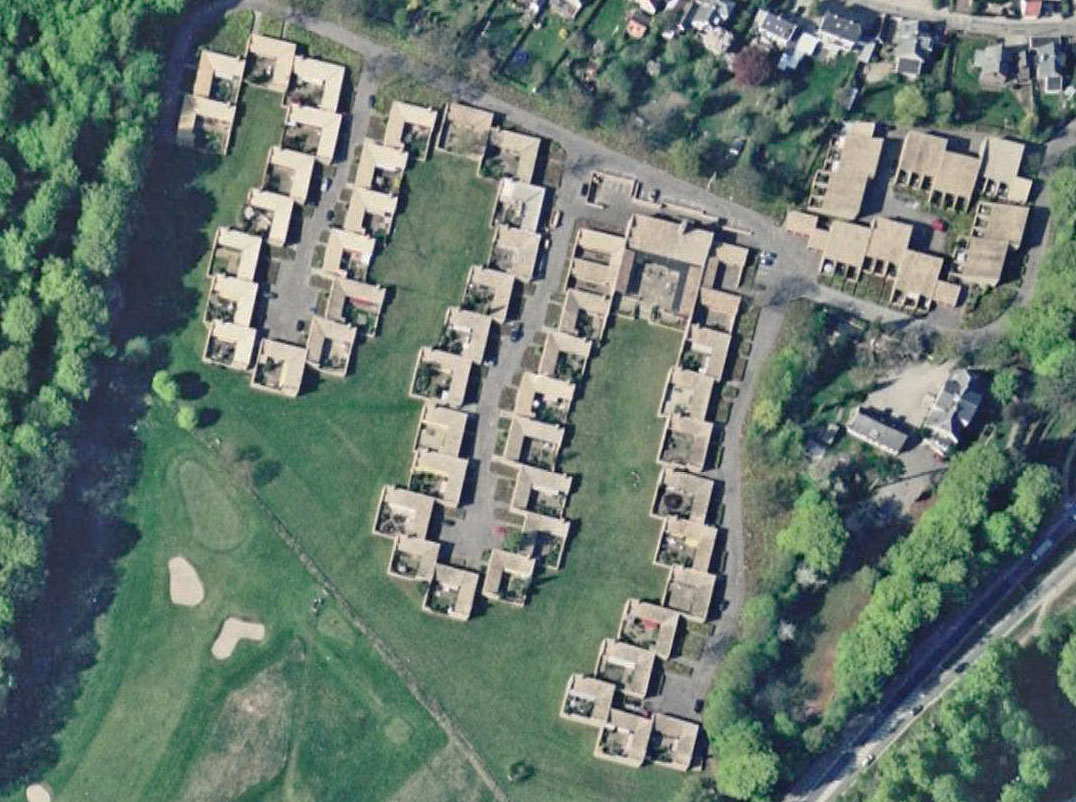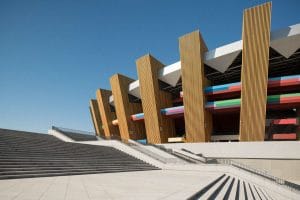Modernism in Urban Planning opted for the mechanization of the city, the functionality, the order, the zoning – these are some of the main principles originated from the fourth CIAM of architecture, that will be then put on paper with the “Athens charter”.
These principles are clear in Le Corbusier’s project “La ville radieuse”, dated 1935, and they are made in order to bring order in the city and conceive it as a machine that works according to specific rules. This is the vision of the masters of the Modern movement. This vision will influence the urban planning of the remaining part of the century.
The modern city is the one where everything can be easily distinguished, included the four principal human activities: living, working, enjoying free time and going around. This way of thinking achieved resounding success at a worldwide level until the moment in which it was clear that the cities planned following these rules do not take into consideration the real needs of citizens.
The human being needs to engage with the others and he is not a simple gear nor a machine, and the city neither.
The Finnish architect Alvar Aalto used to think differently, he made an effort in offering his contribution in the urban planning during the postwar reconstruction of the peninsula. As happened to Le Corbusier before, also Aalto confronted himself with the issue of standardization, but he relegated this exigency of mechanization to the mere executive practice.He focused his work in the attempt of satisfying human needs- pulling away from the Modern movement and opening the doors to the Organic architecture.
He unified industry and functionalistic theory in order to make people feel home also in a city destroyed by Luftwaffe airplanes. He was convinced that every family was an independent nucleus with its own life and habits, but in the same time stays in a community. The relation with neighborhoods takes place outside home, in locations that become public spaces aimed to socialization.
Jorn Utzon, surely influenced by his master, had the same conception of architecture. He was convinced of the need to take into consideration the place and the context, when planning a city.
The context is an important associate and a demanding interlocutor: “the human well-being is something that is studied for a lifetime” says Jorn Utzon. And to pursue this objective the architect has to be as close as possible to the people.
According to Utzon, the stronger is the relationship between architect and people, the better will be the project. On the contrary, if this connection lacks, we risk to lose the more important thing: the humanity of the project. In total opposition to modernism in urban planning
If you like this post _share it_ we would be extremely grateful to you. And continue to follow us to stay updated!










6 Responses
i need source to do mini assignment, thank you for your support !